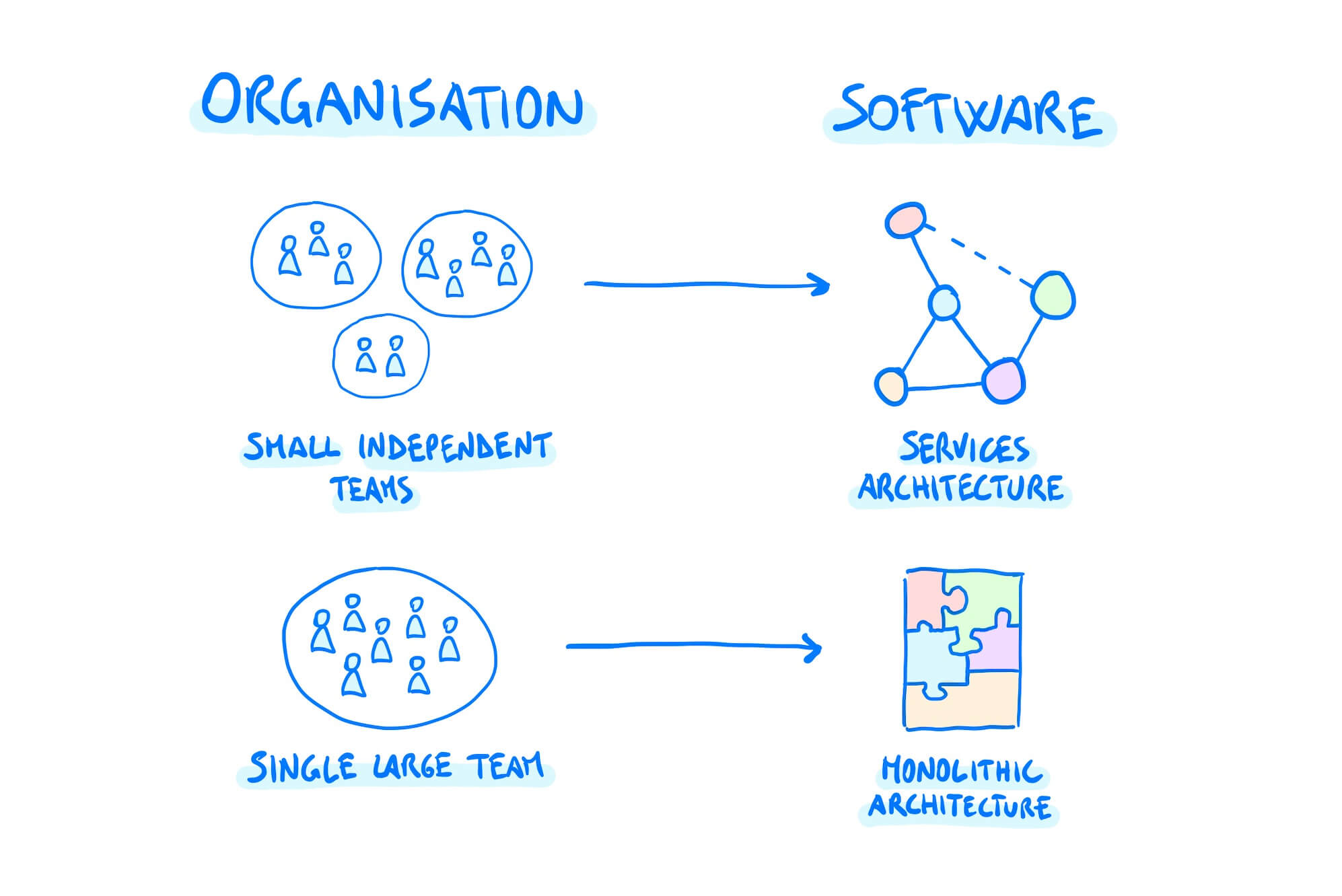What is Conway’s Law? TLDR: It’s important to recognise that a system built by a team will produce a design that is a copy of the organisation’s communication structure. Sometimes it might be necessary to 1) start it from scratch and not be influenced by the organisations structure, or 2) build a new system and new organisation structure. This is more and more important as technology develops faster.
Conway’s Law is an adage that was first introduced by Melvin E. Conway, a computer programmer, in 1967. The law states: “Any organization that designs a system (defined broadly) will produce a design whose structure is a copy of the organization’s communication structure.”
This means that the way in which an organization is structured will significantly influence the design of its systems and products. For instance, a company with a highly compartmentalized structure is likely to produce software with tightly coupled but isolated modules that reflect the organization’s silos.
Why People Should Understand Conway’s Law
- Predicts Design Outcomes: Understanding Conway’s Law helps predict the outcome of system designs based on organizational structure. It’s a crucial insight for anticipating how team dynamics and communication patterns affect the architecture of the systems they build.
- Informs Organizational Design: By acknowledging the implications of Conway’s Law, leaders can intentionally design their organizations to foster the kind of system architecture they aim to achieve. For example, a company seeking to build integrated, seamless software solutions might prioritize breaking down silos and encouraging cross-functional collaboration.
- Facilitates Better Planning: Knowing that the organizational structure impacts system design allows for better planning and allocation of resources. It underscores the importance of communication and collaboration tools in the development process.

Considerations for CEOs and Product Managers
- Align Organizational Structure with Product Goals: CEOs and product managers should consider how their company’s structure supports or hinders the development of their products. For example, if the goal is to create a cohesive product, ensure that the organizational structure does not create unnecessary barriers between teams.
- Promote Effective Communication: Encourage open lines of communication across different departments. Tools and practices that facilitate collaboration can help mitigate the restrictive effects of Conway’s Law by ensuring that information flows freely across the organization.
- Iterate on Organizational Design: As product goals evolve, so too should the organization. Leaders should be willing to reevaluate and adjust their team structures to better suit the needs of their products. This might include creating cross-functional teams or adopting more agile organizational models.
- Understand the Impact of Scaling: As companies scale, the complexity of their systems often increases. Being mindful of Conway’s Law during this process can help manage complexity by ensuring the organizational structure and communication patterns are conducive to the desired system architecture.
- Leverage for Competitive Advantage: Use the insights from Conway’s Law to create a strategic advantage. By designing an organization that inherently supports the development of superior products, a company can position itself ahead of competitors who might not be considering the implications of their organizational structure on product design.
In summary, Conways Law offers valuable insights into the interplay between organizational structure and system design. CEOs and product managers should consider it as a critical factor in strategic decision-making, using it to inform both the design of their products and the structure of their organization to achieve desired outcomes.
